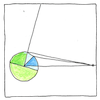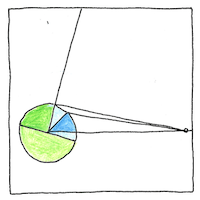Hipparchus
astronomy

|
Astronomy
Hipparchus gathered eight centuries of records from Babylonian astronomical diaries and made a list of lunar eclipses. Hipparchus saw that the stars might be moving, and so created the first comprehensive star catalog. In the process, Hipparchus invented trigonometry and handed down from the Sumerians the circle with three hundred and sixty degrees. Hipparchus measured the year, the month, and the seasons more accurately than anyone else for three thousand years. Hipparchus discovered that the equinoxes moved westward along the ecliptic relative to the fixed stars. Hipparchus developed a mathematical model of the known universe so that the position of everything could be predicted. Hipparchus might have been the first to develop a reliable method of predicting solar eclipses.
Heritage
The Chinese kept detailed astronomical observations from the sixth century BCE and made the first star catalog in the fourth century BCE. People made solar observatories called Goseck circles five thousand years ago in Germany. From five thousand years ago, Egyptians fixed the dates of religious festivals according to the stars. Useful Babylonian observations appeared during the reign of Nabonassar starting in 747 BCE. By 100 BCE, the Greeks could calculate the positions of astronomical objects using an analog calculator.
Predictive astrology
Astrology made astronomy necessary— astrology and priestly concern for divination. All observations were made to refine predictions— auspicious times for planting, harvesting, sacrifice. There’s no need to assume that people back then were any less discerning than we are. Today, horoscopes appear in the papers and even if people don’t believe then at least they are entertained by irrational claims.



Predictive astronomy did not begin with Hipparchus, and of course his model of the universe was geocentric. Apparently Hipparchus tried to calculate a heliocentric system but gave it up when he found that orbits could not be circular as required by the current conception of the universe as taught by Plato and Aristotle.
See also in The book of science:
Readings in wikipedia: